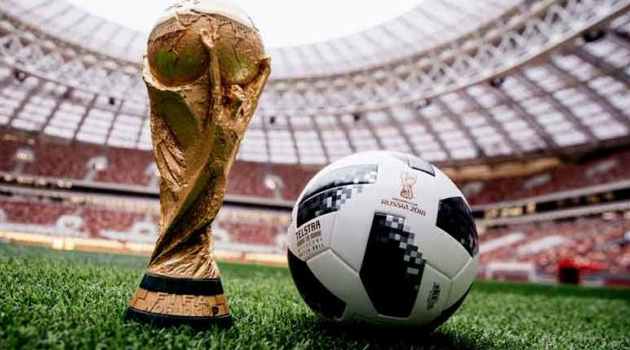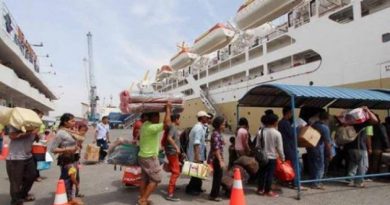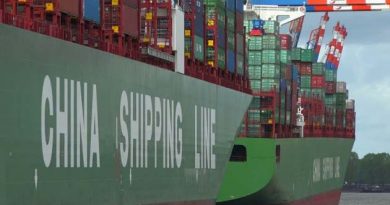Fifa Likely to Beat Profit Target with Russia World Cup

The 2018 World Cup has cost Russia billions of dollars to stage and will make Fifa, football’s world governing body, hundreds of millions in profit.
Still, the big numbers that are routine for major sports events are unlikely to set World Cup records, according to AP.
Russia’s official budget of 678 billion roubles (Dh42.6bn) spent on projects for the tournament is less than the estimated $15bn spent by Brazil on the 2014 World Cup.
The budget to meet President Vladimir Putin’s pledge to showcase a warmer, more open Russia excludes some transport projects the tournament relies on. It also looks a bargain compared to the $51bn bill for the 2014 Winter Olympics that extended from Sochi into nearby mountains.
Fifa will top $6bn for the four-year commercial cycle tied to this World Cup, beating its $5.65bn target. The marquee tournament is overwhelmingly the main source of Fifa income.
That target, however, was conservative compared to $5.72bn of overall income booked by Fifa in the Brazilian World Cup period.
Sponsors have been harder to sign since the May 2015 revelation of American and Swiss federal investigations of bribery rocked Fifa and dozens of international soccer leaders.
The National reported last year that as Fifa was convulsed by corruption and scandal in the previous couple of years, the reputation of football’s world body took a hammering and advertisers walked away. Finding replacements has not been easy.
At that stage in the commercial cycle for the 2014 World Cup in Brazil, most sponsors were in place but by April last year only 10 of up to 34 deals for this month’s finals had been confirmed.
So, had Fifa become a toxic brand or did the situation offer sponsors the chance to negotiate great deals?
Adrian Pettett, the chief operating officer at Havas Sports & Entertainment Cake, last year described the bad news that had dogged Fifa as “damaging but by no means fatal”.
“Doubtless some existing Fifa sponsors will have used the bad publicity as a reason to exit their deals or not renew. Others will have looked at the venues for 2018 and 2022 – Russia and Qatar – and pondered their ability to activate effectively in those markets and gain a return on the considerable investment. This has left space for new entrants, of which there will be plenty.”
Interestingly, several new sponsors come from countries with motives outside football.
“In simple terms, it’s a convergence of interests: Fifa needs money following the financial challenges the organisation has faced in the light of its various corruption scandals, and their new sponsors are seeking to pursue a range of different agendas and are prepared to pay in order to fulfil them,” Simon Chadwick, professor of Sports Enterprise at the University of Salford’s business school, told The National.
Here, AP takes a look at some of the financial numbers:
Life was relatively good for Fifa and Russia in December 2010 when hosting rights were awarded.
The 2010 World Cup in South Africa ran smoother than many feared, and helped deliver a $631 million Fifa profit for a four-year period that included a global financial crash. The 2006 World Cup in Germany earned Fifa around $700m.
Oil prices started a surge beyond $100 per barrel, fuelling Russia for its Olympic and World Cup hosting.
By May 2015, oil prices had slumped. Russian banks and businessmen were hit by international sanctions following the previous year’s annexation of Crimea and the rouble value fell.
Fifa’s attempts to sell two-tournament sponsorship packages with the 2022 World Cup in Qatar stalled.
“It is complicated, especially in a market where [potential partners] see some crisis around,” said Philippe Le Floc’h, the Fifa marketing director who inherited tough sales conditions in late-2016.
The World Cup kicks off with two major gaps in Fifa’s sponsorship plan.
Fifa wanted a total of 14 deals in its top-tier “Partner” category – including long-term backers Adidas and Coca-Cola – and second-tier “Sponsor” category. There are just 12.
Companies from the United States, Japan, Germany and Britain did not renew after the 2014 World Cup. Logical replacements, including Russian energy giant Gazprom were joined by four Chinese in the 12-sponsor lineup.
Fifa’s previous leadership revamped the third-tier program for 20 backers – four from each of five global regions – to increase revenue. It did not work outside Russia and China.
The total one week before kick-off: four Russian deals; three with state-controlled firms; three Chinese sponsors; none from the Americas or Africa and the Middle East. The overall 34-sponsor programme found 19 buyers.
However, the booming broadcast rights market has cushioned Fifa’s finances.
Deals struck in 2011 US broadcasters Fox and Telemundo and others reaped a big raise over 2010-2014 tournament prices.
Fifa did lose about $100m of expected income when Italy was eliminated in November before a national TV deal was agreed at a discount.
Ticket sales are below the 3 million mark achieved in South Africa and Brazil. Scaled-back 35,000-capacity stadiums in Yekaterinburg and Kaliningrad are small by modern World Cup standards.
Fifa long predicted a $100m surplus for a 2015-18 period of spiralling legal costs offset by cost-cutting under CEO-like secretary general Fatma Samoura.
The financial report in March predicted end-of-year reserves climbing back to $1.8bn. It was $1.52bn in 2014.
Fifa’s $400m fund for 32 competing national federations is $42m up on 2014.
The winner and runner-up each gets a $3m raise to pocket $38m and $28m, respectively. The 16 teams going home after the group phase each earns $8m.
The governing body has budgeted spending $791m on teams and players – for prize money, club compensation, insurance for players injured on national-team duty, and preparation costs for 32 squads.
Clubs providing players will share $209m from Fifa. A daily rate of $8,530 for the official involvement of 736 players is shared among each club they were registered with in the two previous years.
Fifa President Gianni Infantino has made cash promises through December 2022, when the Qatar tournament ends.
The world body’s 211 member federations get 20 per cent more, lifting their annual grant to $1.5m. Continental governing bodies like Uefa get the same raise, to $12m annually.
The 2022 prize fund goes up 10 per cent to $440m. However, that sum was agreed for a 32-team tournament, and it could yet be for 48.
Fifa’s conservative long-term budget projects $6.56bn income and $6.46bn spending in 2019-22.
Smaller stadiums in Qatar means income from ticket and corporate hospitality sales should drop.
World Cup broadcasting rights are ever-more important, providing half of all revenue in the next four years, Fifa said in March.
“There are clear and tangible reasons why the likes of China and Russia are using sport as a vehicle to further much broader agendas,” Prof Chadwick told The National. Sponsorships thus far have been either commercially driven or else driven by personal interest or vanity.
“We are now living in an era of highly politicised sponsorships.”
The Chinese football expert Rowan Simons added: “From the outside, it looks very much like the calibre of Fifa partners, by which I mean their commitment to promoting the game worldwide, is falling and the potential for conflicts of interest are increasing.”
courtasy : thenational.ae
photo : NewsX
[social_warfare buttons=”Facebook,Pinterest,LinkedIn,Twitter,Total”]



